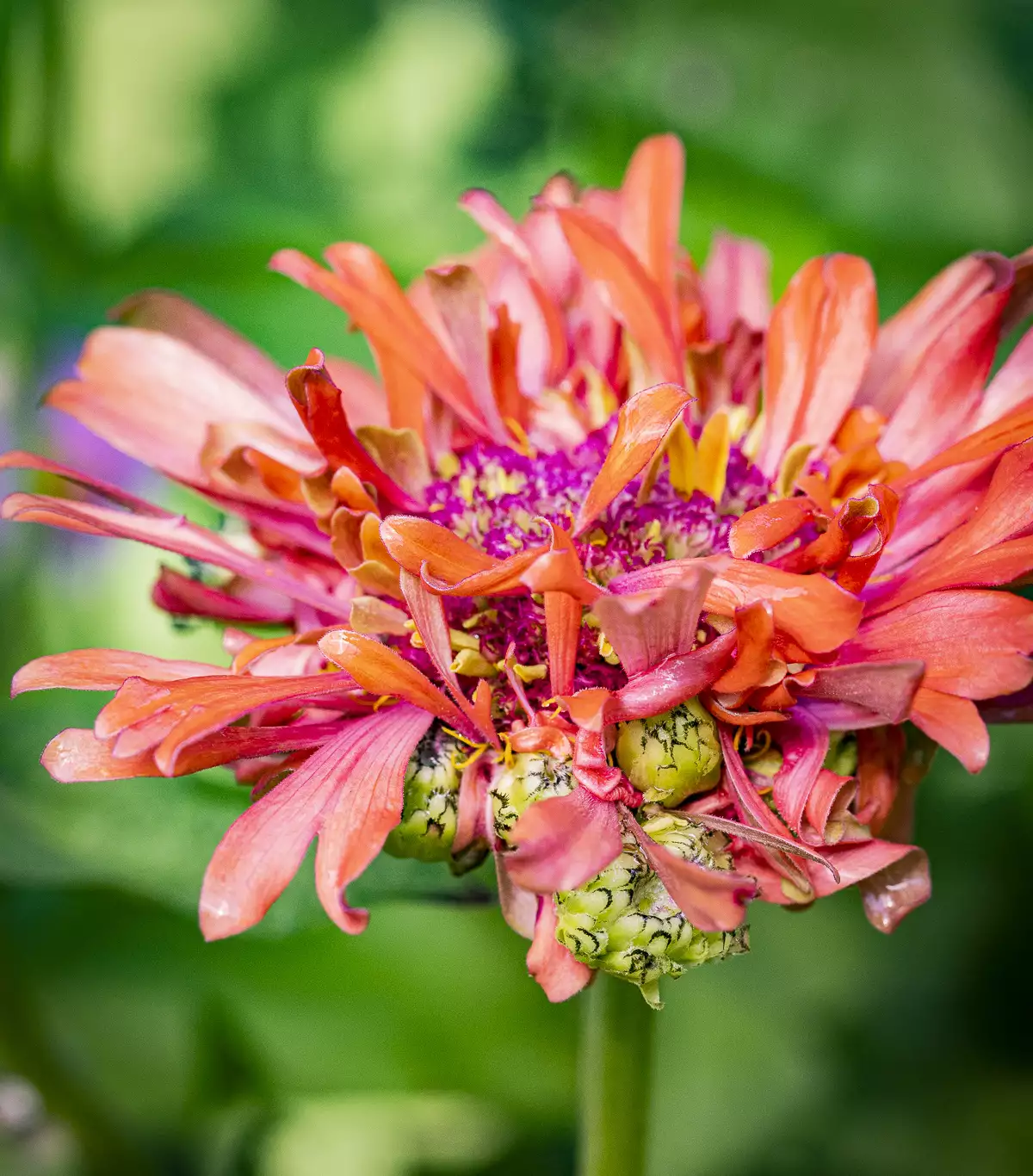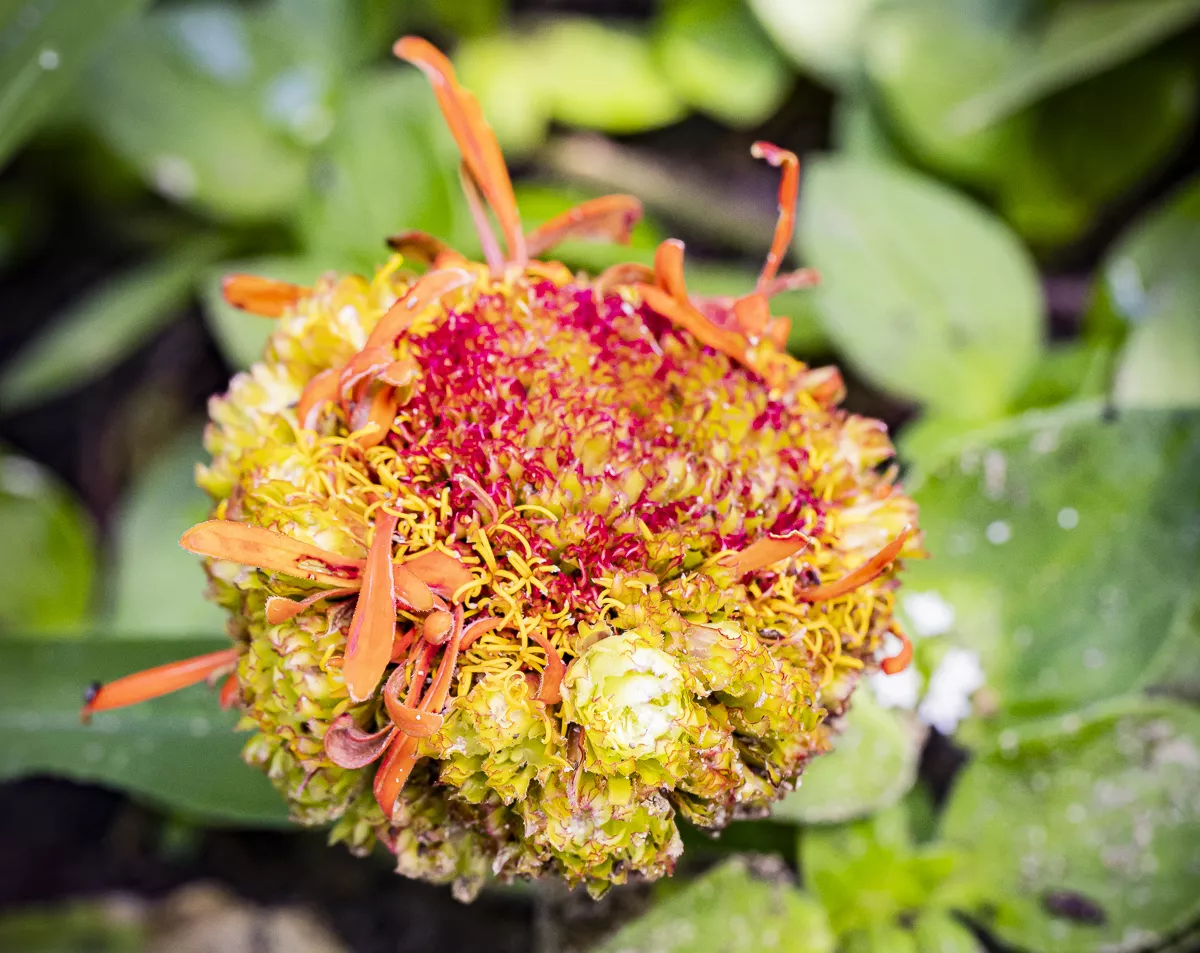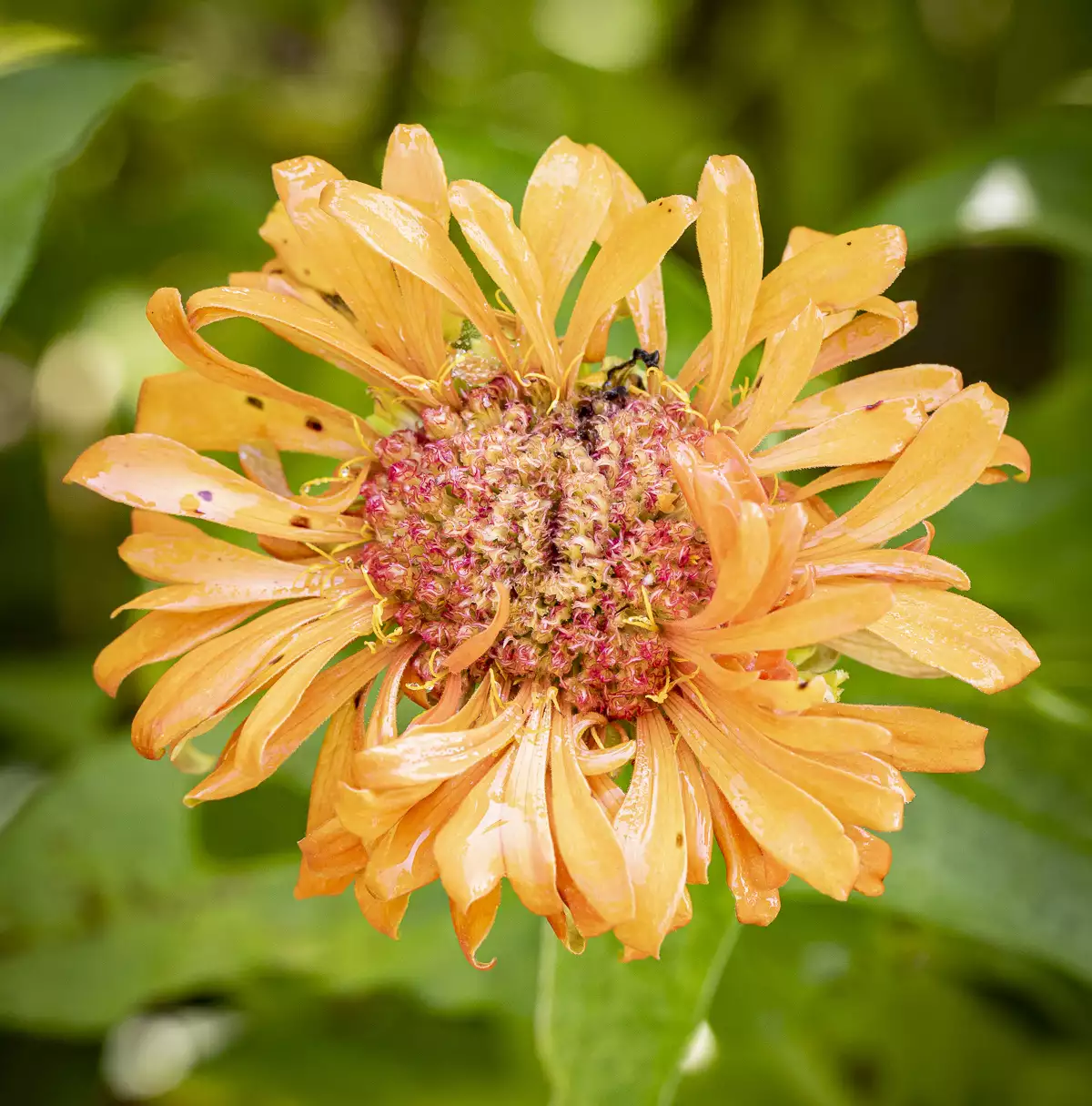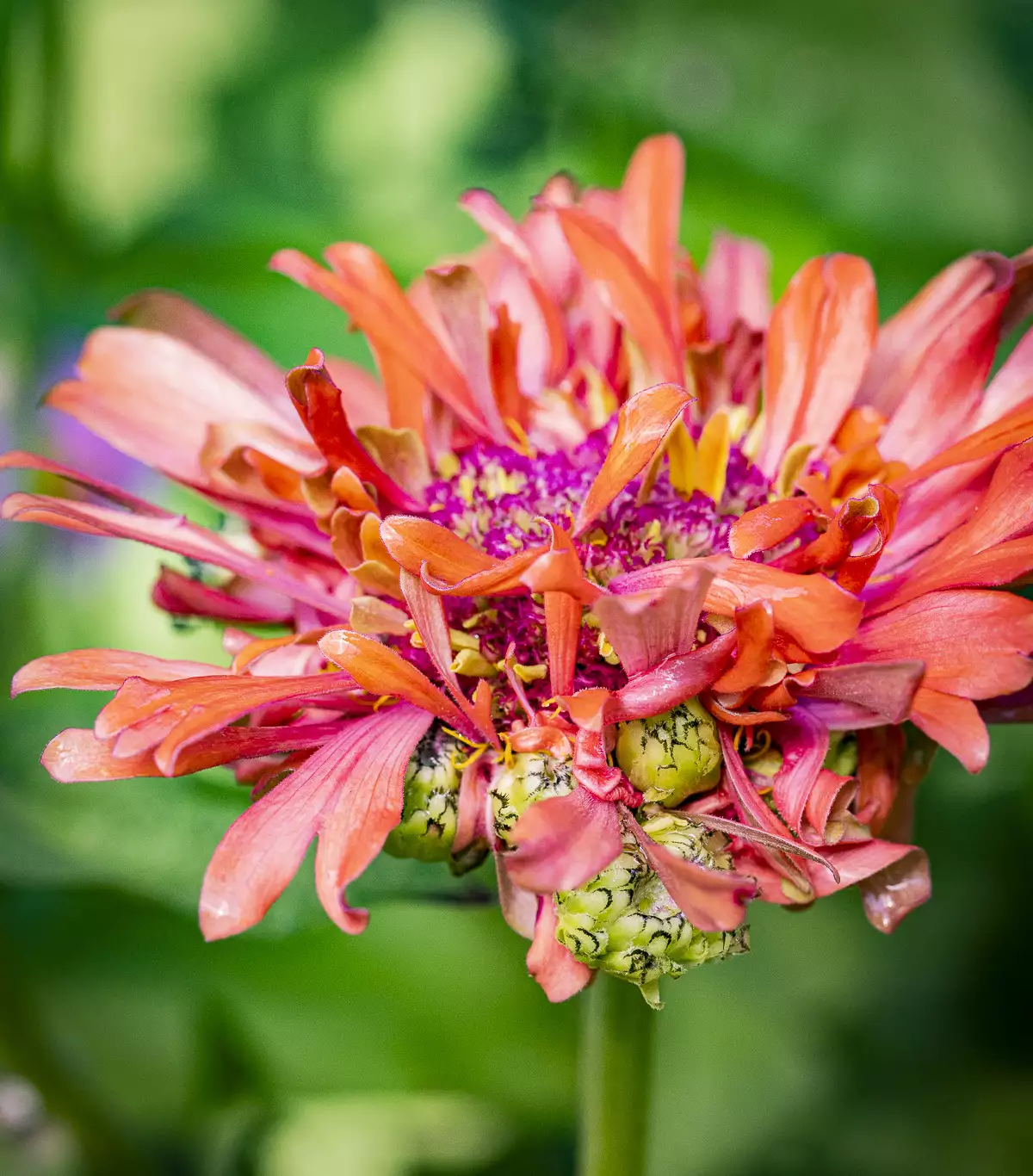
My family loves zinnias. My mother introduced us to the heat-loving annual further back than I can remember, and as we’ve grown into adults (with thumbs of various shades of green), my sister and I have delighted in growing them from seed, watching in anticipation as each flower opens to reveal its colorful interior.
My sister Jennifer in particular has become the zinnia whisperer. As she “deadheads” or pinches off the spent blooms, she’ll crumble them in her hands and just scatter the remnants into her flowerbed. Like the tiny tufts from a blown dandelion, some of the zinnia seeds find their way to the earth, settle in for the winter, and then “volunteer” in the spring to start the wild cycle of color again.
But this year, something surprising sprang forth. Some of her zinnias were “normal.” But a handful of others sported wild “mutations” that we couldn’t explain. Take a look…

The purple zinnia at the top left of the photo is “normal” (as if there’s anything normal about these beautiful blooms). But look at it compared to the flower at the bottom right. Wild, right?
Instead of being a single flower, the “mutant” zinnia appears to be a cluster of many flowers, each bursting into bloom like a botanical fireworks show!

This is what most of the “mutant” zinnias look like before they they start to bloom—kinda like the ball at Epcot. Although at first glance you might think this is the flower “head” of the zinnia, it’s actually hundreds of zinnia heads crammed together on one stalk!

As each head starts to bloom, the petals unfurl like little solar flares, hurling out tendrils of wild, unruly color.

When my sister called me to come see her “mutant” zinnias, I brought our photographer Robbie Caponetto along for the ride. We both couldn’t believe our eyes—Jen’s zins were almost beyond description. There wasn’t a botanist in the bunch, so we couldn’t explain what we were seeing. But that didn’t stop us from brainstorming some wild theories.
What Caused These Zany Zinnias?
The first word that came to our minds when we saw the multi-headed zinnias was the word “mutation.” But what could have caused it? Could it be the extreme heat of an Alabama summer? Were my sister’s zinnias planted on top of a nuclear waste site? Did aliens fly over and zap them with some kind of cosmic ray?
Finally, we stopped scratching our heads, and I contacted our resident expert, The Grumpy Gardener. I sent Grumpy (AKA Steve Bender) some photos of the zany zins, and he got right back to me.
“Your zinnias are infected with a virus called aster yellows,” Steve said. “It causes flowers to do weird things. If they’re perennials, it shortens their lives. But since zinnias are annuals, you can just enjoy the CGI until the fall if you want. Or you can pull up the weirdos and throw them out.”
How wild is that? To be honest, I was a little disappointed that my sister hadn’t accidentally created a new Alice-In-Wonderland zinnia hybrid. But we definitely didn’t pull up the “weirdos.” We let them bloom in all their magical mutant glory. It’s cool to be a little weird, right?






